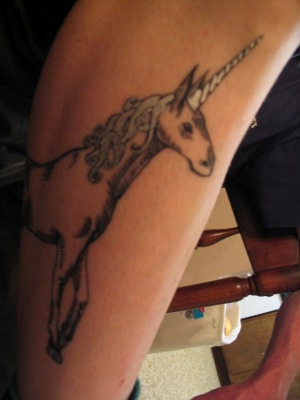The Poincaré Conjecture by Donal O'Shea is a great book.
It's a math history book, and i'm a sucker for math history, but this one has a little extra charm because it traces a direct path about a single math problem from it's precursors in ancient times to Poincaré and the other great topologists of the late 1800s and finally to its conclusion in 2002/2003 by an almost unbelievably reclusive Russian mathematician,
Grigori Perelman.
Considering that it refused the advances of the world's best topological minds for a century, the Conjecture is an amazingly simple question, and i'll summarize O'Shea's summary here:
Imagine that you live on a very large world, but that the visibility on that world is pretty short - maybe you can only see five miles in any direction at any time. Furhter imagine that the world has only ambient lighting; ie there's no convenient Sun or other absolute referent. And you want to set about building a globe of your world. So you start at some point and map out a 5x5 area, and then move nearby and map out another 5x5, and so on. Eventually, you've mapped out the entire surface of your world - that is, all of your 5x5 maps ajoin to other 5x5 maps and there's no gaps. in other words: you've been everywhere you can be, and made maps of everywhere. Therefore, you know your world is finite. It isn't infinite. Furthermore, you haven't encountered any edges; you haven't fallen off the edge of the world.
To Summarize:
your world is finite, has no edge, and you've got a set of 5x5 mile maps covering every inch of it.
The Question:
how do you know if you live on a topological sphere (like our world), or a donut ?
bear in mind that topologically speaking, a sphere = a cube = a jam jar,
and a donut = a coffee cup = a drinking straw.
The Answer:
[in a very tiny font, which you should copy-n-paste elsewhere to actually read]
what you do, is you start somewhere and drag out a piece of string behind you, go walking as far as you please and come back to where you started. maybe you walk in a five-foot circle, maybe you walk all the way around the world. then you try to take up the slack by pulling in the string behind you. now, on a sphere like our earth, you'll be able to pull the string in all the way so that the loop contracts all the way down to nothing. this will be the case no matter what path you walked. but on a donut, there are paths you can walk where you won't be able to pull the string back to a single point. For example if you walk from the outside of the donut to the inside and then around back to the outside. So if all loops can be contracted to a point, you're on a sphere. If not, you're on something more complicated, like a donnut.SO, GREAT.
There's a way to tell if you're on a sphere or a donut, and Poincaré proved it.
But here's the conjecture.
This simple method works in three dimensions. But does it work in four dimensions ? Five ? Six ? Spheres and donuts both have well-defined partners in those higher dimensions, but Poincaré was unable to prove the simple sphere-or-donut technique for them, nor was anyone else.
Until about forty years later, when someone proved it was true in dimensions eight and higher. And then ten years later someone proved six and seven. And then someone proved five. All that was left was four dimensions. And despite a huge flowering of topology and no lack of attention, proving the Conjecture in four dimensions remained undone for the next fifty years.
The actual mechanism which Perelman used is substantially complex and i certainly couldn't follow along, but it was definitely fascinating. Somewhat moreso by the shadowy character of Perelman, who refused the Fields Medal, and who has yet to attempt to claim the one million dollar prize set on the Conjecture by the Clay Mathematics Institute.
Bookwise,
The Conjecture was great. Admittedly i've got a soft spot for math history, without which this might not be all that entertaining; but by God it's good !


